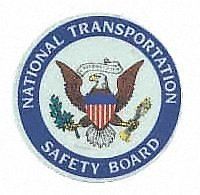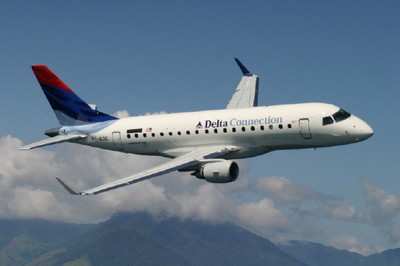Pilot Lost Sight Of Runway Briefly Just Before Touchdown
 On
Sunday, the National Transportation Safety Board issued its
Preliminary Report on a February 18 runway overrun incident at
Cleveland Hopkins International Airport. The unedited text of that
report follows below.
On
Sunday, the National Transportation Safety Board issued its
Preliminary Report on a February 18 runway overrun incident at
Cleveland Hopkins International Airport. The unedited text of that
report follows below.
NTSB Identification: CHI07MA072
Scheduled 14 CFR Part 121: Air Carrier operation of Shuttle America
(D.B.A. Delta Connection)
Accident occurred Sunday, February 18, 2007 in Cleveland, OH
Aircraft: Embraer ERJ-170, registration: N862RW
Injuries: 74 Uninjured.
This is preliminary information, subject to change, and may
contain errors. Any errors in this report will be corrected when
the final report has been completed.
On February 18, 2007, at 1506 eastern daylight time, an Embraer
ERJ-170, N862RW, operated by Shuttle America, as Delta Connection
flight 6448, was substantially damaged when it overrun the end of
runway 28 (6,017 feet by 150 feet, snow covered) while landing at
the Cleveland Hopkins International Airport (CLE), Cleveland, Ohio.
The airplane contacted the localizer antenna and a fence prior to
coming to rest approximately 150 feet off the end of the runway.
The captain, first officer, 2 flight attendants, and 70 passengers
were not injured. Instrument meteorological conditions prevailed
and the flight was operating on an instrument flight plan. The
scheduled passenger flight was operating under 14 Code of Federal
Regulations Part 121. The flight originated from the
Hartsfield-Jackson Atlanta International Airport (ATL), Atlanta,
Georgia, at 1331.
The first officer was flying the airplane at the time of the
accident. The captain reported they were cleared for the ILS runway
24R approach. He stated that approximately 10 minutes prior to
landing, air traffic control changed the landing runway to runway
28. The captain stated they were informed that the runway visual
range (RVR) was 6,000 feet and that the braking action was fair. He
reported that after passing the final approach fix, they were
informed that the RVR had decreased to 2,000 feet. The captain
stated he had the approach lights in sight and at 50 feet above the
ground, he had the runway in sight. He stated the first officer
then turned off the autopilot to land. The captain stated that at
30 feet above the ground he momentarily lost sight of the runway.
He stated he then regained sight of the runway and the airplane was
landed. He stated they encountered strong gusty winds during the
landing flare and after touchdown they could barely see the runway
lights and taxiway turn-offs. The captain reported that despite the
use of full reverse and braking, the airplane did not seem to slow
down. The airplane traveled off the runway and into the snow
covered grass where the nose gear collapsed and the airplane came
to rest. The crew and passengers deplaned using a ladder with
assistance from the fire department.
The glideslope for the ILS runway 28 approach was unusable at
the time of the accident due to the snow. The crew stated they were
made aware of this by air traffic control when they were cleared
for the approach to runway 28.

The weather reported at CLE at 1456 was: wind 300 degrees at 16
knots, 1/4 mile visibility, heavy snow, broken clouds at 600 feet,
broken clouds at 1,500 feet, overcast clouds at 4,100 feet,
temperature -7 degrees Celsius, dewpoint - 11 degrees Celsius,
altimeter 30.01 inches of mercury.
The weather reported at CLE at 1517 was: wind 330 degrees at 13
knots gusting to 19 knots, 1/4 mile visibility, heavy snow, broken
clouds at 300 feet, broken clouds at 1,000 feet, overcast clouds at
1,500 feet, temperature -8 degrees Celsius, dewpoint - 11 degrees
Celsius, altimeter 30.03 inches of mercury.
 ANN's Daily Aero-Linx (05.06.25)
ANN's Daily Aero-Linx (05.06.25) ANN's Daily Aero-Term (05.06.25): Ultrahigh Frequency (UHF)
ANN's Daily Aero-Term (05.06.25): Ultrahigh Frequency (UHF) ANN FAQ: Q&A 101
ANN FAQ: Q&A 101 Classic Aero-TV: Virtual Reality Painting--PPG Leverages Technology for Training
Classic Aero-TV: Virtual Reality Painting--PPG Leverages Technology for Training Airborne 05.02.25: Joby Crewed Milestone, Diamond Club, Canadian Pilot Insurance
Airborne 05.02.25: Joby Crewed Milestone, Diamond Club, Canadian Pilot Insurance




